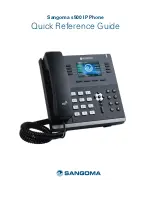
117
emission limits for exposure to
radiofrequency (RF) energy set by the
Federal Communications Commission
(FCC) of the U.S. Government. These
FCC exposure limits are derived from
the recommendations of two expert
organizations, the National Counsel
on Radiation Protection and
Measurement (NCRP) and the
Institute of Electrical and Electronics
Engineers (IEEE). In both cases, the
recommendations were developed by
scientific and engineering experts
drawn from industry, government,
and academia after extensive reviews
of the scientific literature related to
the biological effects of RF energy.
The exposure limit for wireless
mobile phones employs a unit of
measurement known as the Specific
Absorption Rate, or SAR. The SAR is
a measure of the rate of absorption
of RF energy by the human body
expressed in units of watts per
kilogram (W/kg). The FCC requires
wireless phones to comply with a
safety limit of 1.6 watts per kilogram
(1.6 W/kg). The FCC exposure limit
incorporates a substantial margin of
safety to give additional protection to
the public and to account for any
variations in measurements.
Tests for SAR are conducted using
standard operating positions specified
by the FCC with the phone
transmitting at its highest certified
power level in all tested frequency
bands. Although SAR is determined
at the highest certified power level,
the actual SAR level of the phone
while operating can be well below
the maximum value. Because the
phone is designed to operate at
multiple power levels to use only the
power required to reach the network,
in general, the closer you are to a
wireless base station antenna, the
lower the power output.
Before a phone model is available for
sale to the public, it must be tested
and certified to the FCC that it does
not exceed the limit established by
the government adopted requirement
for safe exposure. The tests are
performed in positions and locations
(e.g., at the ear and worn on the
body) as required by the FCC for each
model.
This device was tested for typical
body-worn operations with the back
of the phone kept 0.79 inches (2.0
cm) between the user’s body and the
back of the phone. To comply with
FCC RF exposure requirements, a
minimum separation distance of 0.79
inches (2.0 cm) must be maintained
between the user's body and the
back of the phone. Third-party belt-
clips, holsters, and similar
accessories containing metallic
components should not be used.
Body-worn accessories that cannot
maintain 0.79 inches (2.0 cm)
separation distance between the
user's body and the back of the
phone, and have not been tested for
typical body-worn operations may not
comply with FCC RF exposure limits
and should be avoided.
The FCC has granted an Equipment
Authorization for this model phone
with all reported SAR levels evaluated
as in compliance with the FCC RF
emission guidelines.
Safety
US670_Eng_Ver1.1_110527.qxd 2011.5.27 2:7 PM Page 117
Summary of Contents for Optimus U US670
Page 149: ...147 MEMO US670_Eng_Ver1 1_110527 qxd 2011 5 27 2 7 PM Page 147 ...
Page 150: ...148 MEMO US670_Eng_Ver1 1_110527 qxd 2011 5 27 2 7 PM Page 148 ...
Page 308: ...MEMO US670_Spa_Ver1 1_110527 qxd 2011 5 27 2 22 PM Page 158 ...
Page 309: ...MEMO US670_Spa_Ver1 1_110527 qxd 2011 5 27 2 22 PM Page 159 ...
















































